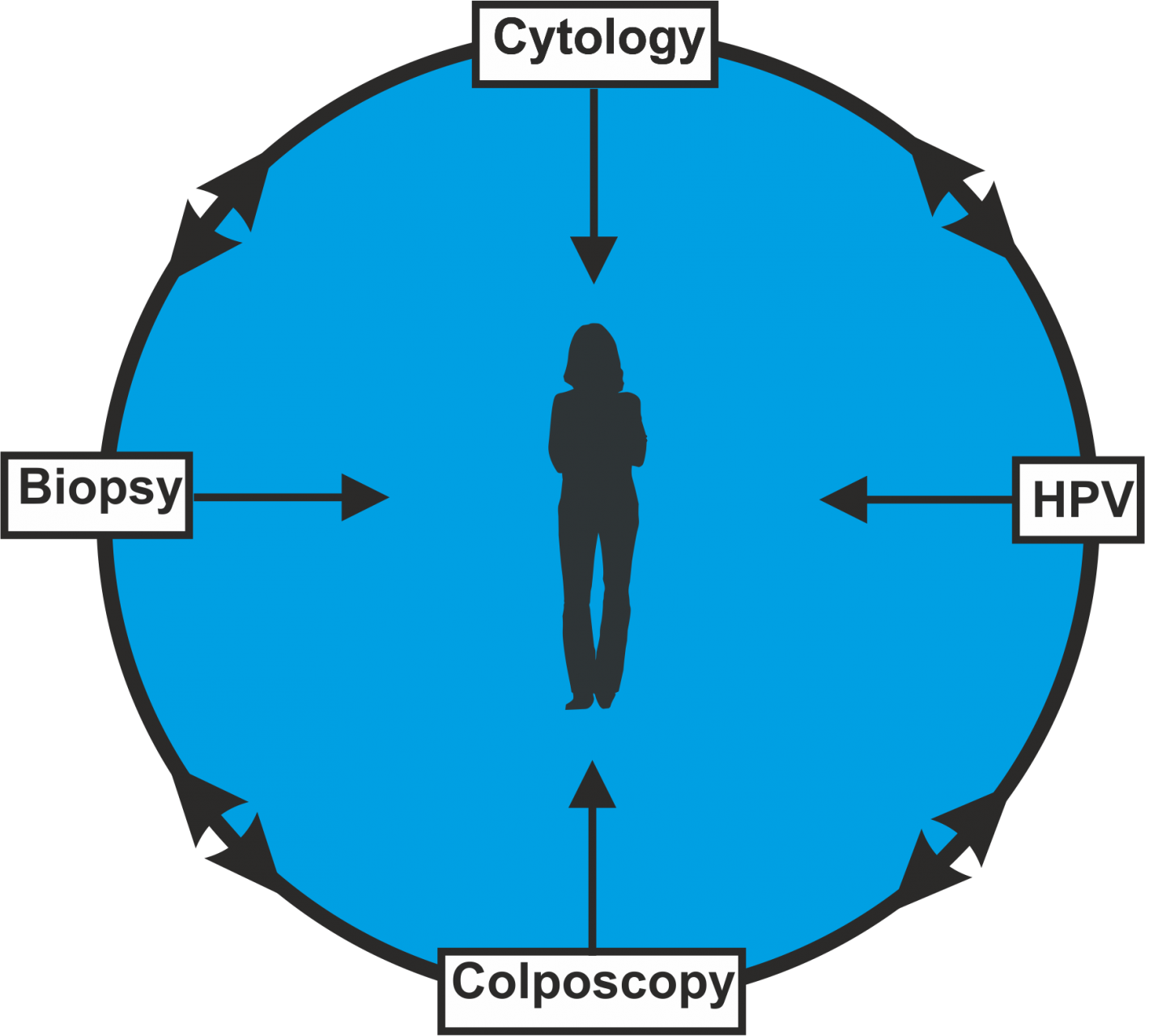This content is also available in:
Português
Čeština
Română
Türkçe
The role and structure of the multidisciplinary team
The effectiveness of cervical cancer screening, however the primary test is carried out (cytology, HPV testing, colposcopy, VIA), depends on the following:
- Detecting and removing precancerous lesions before they become (fully) invasive (CIN2, CIN3, AIS, occult cancer)
- Deciding how to manage lesions that are likely to be reversible but are at some risk of progression (CIN1, HPV-positive)
- Safely returning women at minimal or no risk to routine screening (no CIN, HPV-negative, colposcopy negative)
Colposcopy is the key investigation for making this decision and deciding the type of treatment and in many instances for carrying it out.
- The presence of the woman at colposcopy depends on the sensitivity of the primary test since all other women will be returned to routine screening (or lost to follow up).
- The decision to treat, and its effectiveness, depends on assessment of all parameters available to the gynaecologist who is advising the patient and acting on her agreement or otherwise to proceed.
- The gynaecologist has to take account of the accuracy of cytology, HPV, cytological appearances and punch biopsy in detecting a genuinely precancerous lesion and makes a decision as to the degree of risk of invasion that warrants advising and carrying out treatment.
|
The structure of a multidisciplinary team meeting
There are two forms of MDT meetings of which the first is the main forum discussed in this chapter. The first is between at least one representative colposcopist, cytotechnologist, cytopathologist and histopathologist to discuss discrepancies or other problems with non-invasive cases on a weekly or fortnightly basis depending on the size of the centre; the second is a gynaecological oncology meeting, where the much less frequent invasive cancers are discussed between pathologists, gynaecologists, oncologists and radiologists.


